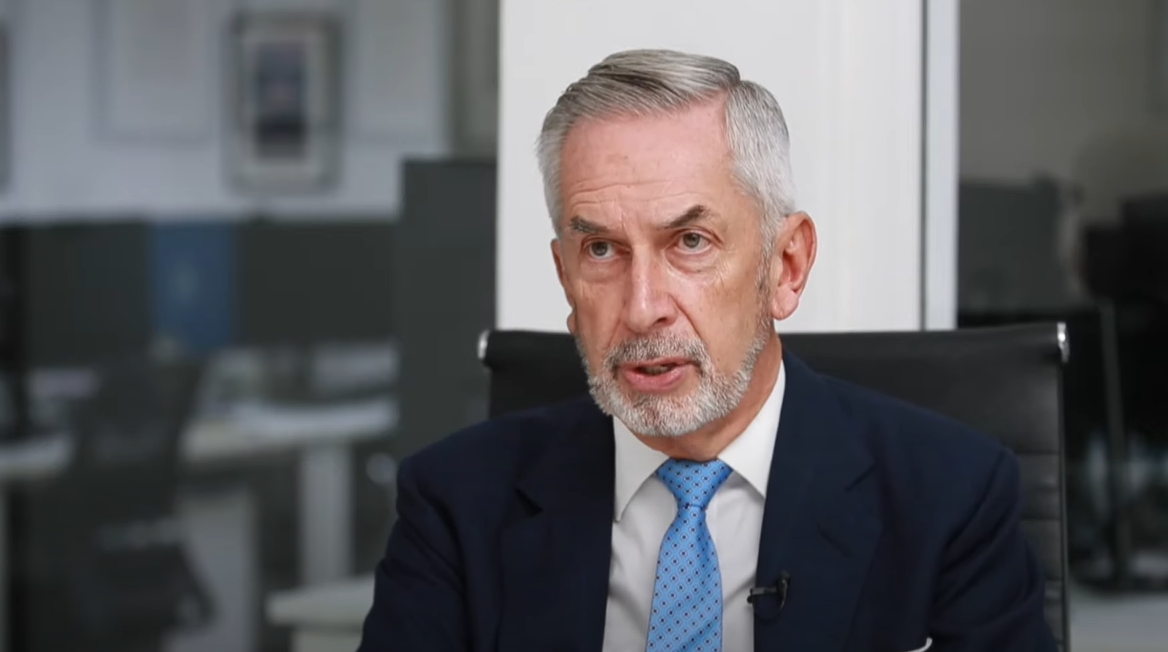Terry Smith adds tech stock owned by Smithson to flagship portfolio
The star fund manager continues to tinker with his portfolio as recent performance underwhelms, writes Sam Benstead.
2nd November 2023 09:04
by Sam Benstead from interactive investor

Terry Smith has introduced another new stock into his £22.3 billion Fundsmith Equity, as volatile markets provide new opportunities for the veteran stock picker.
The new position is California-based Fortinet Inc (NASDAQ:FTNT), a cybersecurity company with a market capitalisation of $45 billion (£37 billion).
- Invest with ii: Top ISA Funds | Top Junior ISA Funds | Open a Stocks & Shares ISA
Founded more than 20 years ago, it has 680,000 customers globally, selling companies a complete cybersecurity package on a subscription basis, which includes firewalls and risk-detection tools.
Revenue over the past 12 months was just under $5 billion, with a net income (profit) of around $1 billion, according to data from Morningstar.
The shares trade at a price-to-earnings ratio of 38 times, which is just under double the average for S&P 500 companies.
- ‘Is this right?’: fund concentration rules give Terry Smith a headache
- Terry Smith sells share he flagged as “concerning”
- The top 10 most-popular investment funds in October 2023
However, growth is impressive, with sales increasing 25.5% in the second quarter of 2023 compared to the same quarter a year earlier. Shares have risen 290% over the past five years and are up 17.5% this year.
There have been setbacks though. The shares plummeted 26% in August 2023 after the firm reported worse-than-expected future business bookings due to difficult economic conditions.
Updating investors, Smith said: “We began a currently small holding in Fortinet.”
Fortinet is the fourth-largest position in Smithson Investment Trust. Managed by Simon Barnard, Smithson applies Terry Smith’s investment approach of buying “quality” shares to small and mid-cap stocks.
Fundsmith Equity fell 1.9% in October, ahead of the 2.3% drop for the MSCI World index. This calendar year it is up 4.5% compared with 6.9% for global shares benchmark.
Returns since launch in November 2010 are impressive still, delivering a 14.8% annualised gain. But over the past three years Fundsmith Equity has failed to outperform its benchmark, with T Class units returning 17% compared with 35% for the index, according to data from FE Analytics. Over five years, returns against the index are very similar.
- Fund Battle: Fundsmith Equity vs Lindsell Train Global Equity
- Why Terry Smith sold Amazon, and how his portfolio is performing
- Five fund trends catching our eye
The top five contributors in the October were Microsoft, Novo Nordisk, Nike, L'Oréal and Procter & Gamble. The top five detractors were McCormick, Automatic Data Processing, Waters, IDEXX and Mettler-Toledo.
Microsoft has replaced Novo Nordisk as the largest position in Fundsmith Equity.
Smith, who has a lower turnover than most fund managers, has had a relatively busy year in terms of trading. Over August, he sold out of US cosmetics group Estee Lauder (NYSE:EL) and bought shares in hotel group Marriott International (NASDAQ:MAR) to replace it.
He has also added Procter & Gamble this year, and sold technology stocks Adobe and Amazon.
These articles are provided for information purposes only. Occasionally, an opinion about whether to buy or sell a specific investment may be provided by third parties. The content is not intended to be a personal recommendation to buy or sell any financial instrument or product, or to adopt any investment strategy as it is not provided based on an assessment of your investing knowledge and experience, your financial situation or your investment objectives. The value of your investments, and the income derived from them, may go down as well as up. You may not get back all the money that you invest. The investments referred to in this article may not be suitable for all investors, and if in doubt, an investor should seek advice from a qualified investment adviser.
Full performance can be found on the company or index summary page on the interactive investor website. Simply click on the company's or index name highlighted in the article.